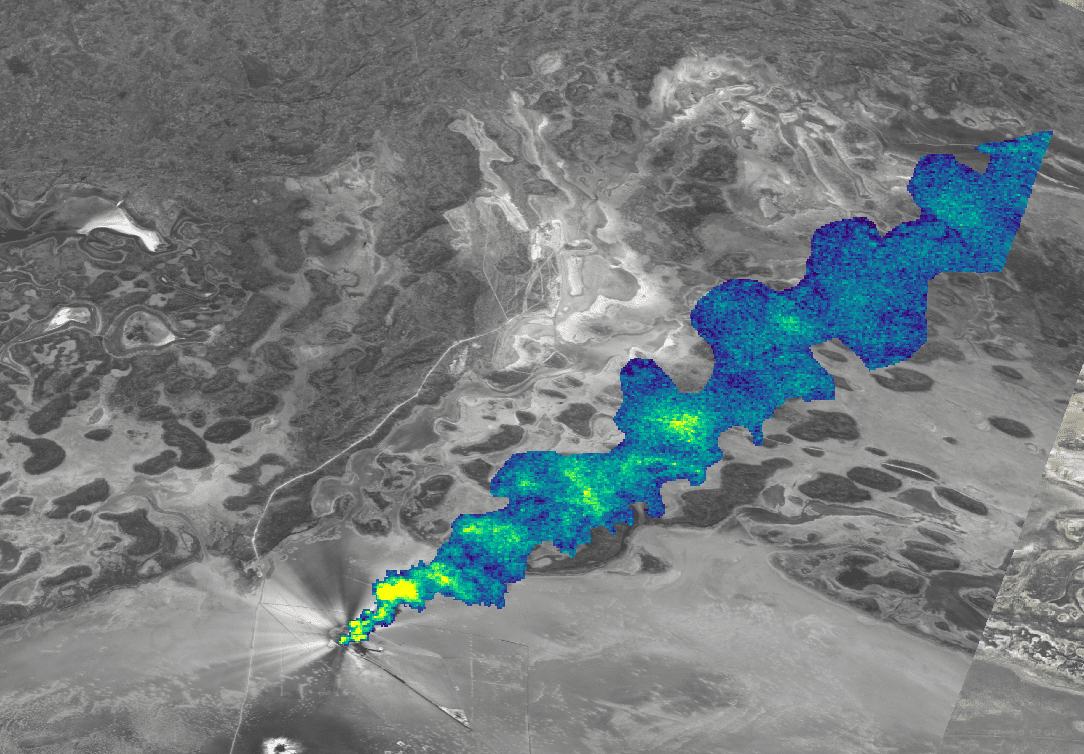Scientists have detected a huge methane leak in a remote region of Kazakhstan. The leak is coming from a natural gas well blowout that occurred on June 9th, 2023. Satellite images show giant clouds of methane spewing from the site.

Satellites Confirm Methane Plumes
Two satellites — the European Space Agency’s Sentinel-5P and the Italian Space Agency’s Prisma — have confirmed the methane plumes. Sentinel-5P’s spectrometer was designed specifically to detect methane. The company that developed the well, Buzachi Neft LLP, claims that the leak is minimal and that the methane is being combusted by the fire.
However, scientists who use satellite observations to track greenhouse gas emissions disagree. They say that it is extremely unlikely that the satellite images are showing water vapour instead of methane.
French geo-analytics firm Kayrros SAS said in a statement as reported by Bloomberg that, “It is extremely unlikely to mistake water vapour for methane on multiple images captured by two hyperspectral satellites, whose very high spectral resolution leaves little doubt about the nature of the gas observed,”.
Methane emissions contribute most to Global warming being responsible for around 30% of the rise in global temperatures since the industrial revolution. Methane is the second most important greenhouse gas after carbon dioxide and its concentration in the atmosphere is currently increasing at a rate of around 1% per year. It has a warming power that is more than 80 times that of carbon dioxide during its first 20 years in the atmosphere. It effectively absorbs heat from the sun, more so than carbon dioxide, and contributes significantly to the warming of the atmosphere.
As a result, there is a growing demand to track and regulate methane emissions. The methane leak in Kazakhstan is estimated to be releasing the same amount of greenhouse gas as 814,000 to 2.49 million cars every year.
Countries Reduce Methane Emissions
The methane leak in Kazakhstan is a reminder of the risks of fossil fuel exploration. As the planet rapidly warms, countries are getting more serious about tracking and halting avoidable leaks of methane. Both the European Union and the US are working on new rules that are intended to limit methane emissions.
Some 150 countries have also joined the Global Methane Pledge, an initiative that aims to reduce global releases of methane by 30% by the end of this decade. The Kazakh government is working with the company that developed the well to seal the leak. Workers are drilling two directional relief wells that they hope can divert the gas to controlled flares. There are also plans to flood the blowout with water to stop the flow of gas and allow workers to seal it. That work is expected to be completed by September 1st of this year.
Countries must take action to seal the leak and prevent similar incidents from happening in the future. The methane leak in Kazakhstan is a wake-up call for the world. It shows the risks of fossil fuel exploration and the need to reduce methane emissions.









